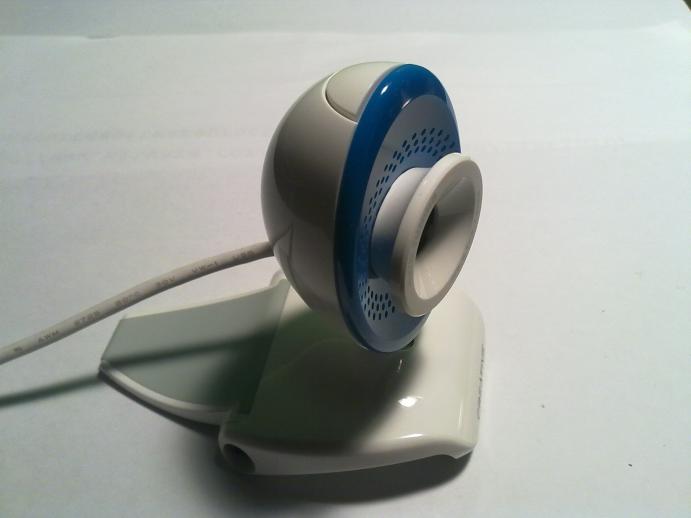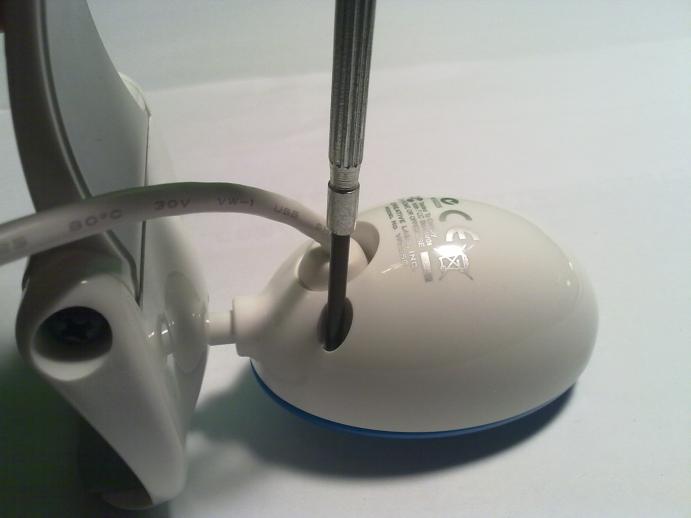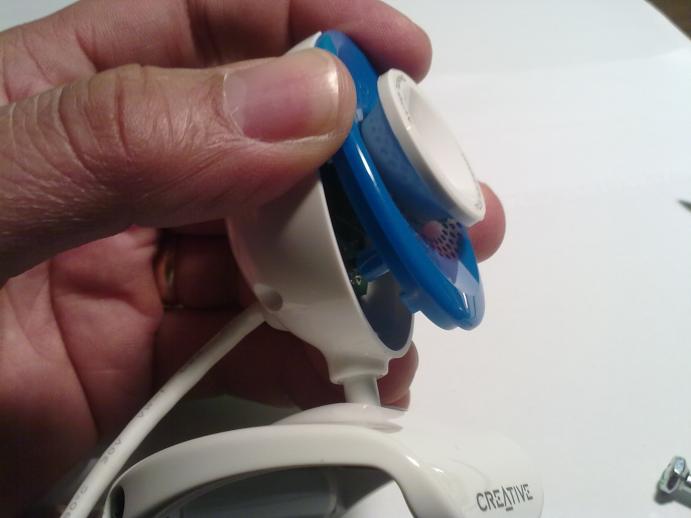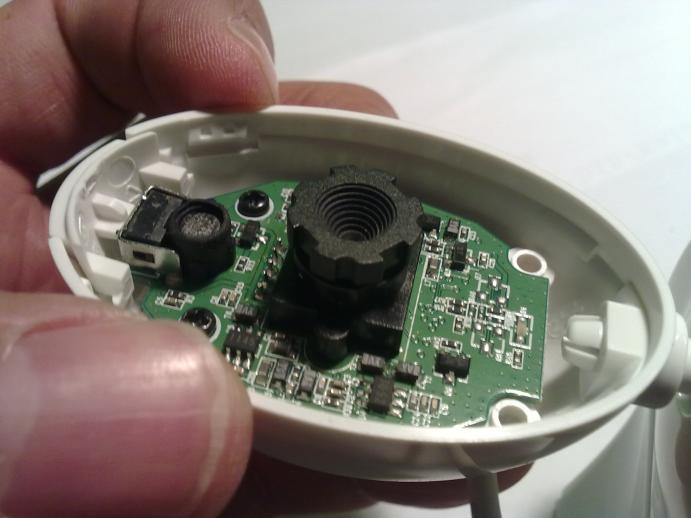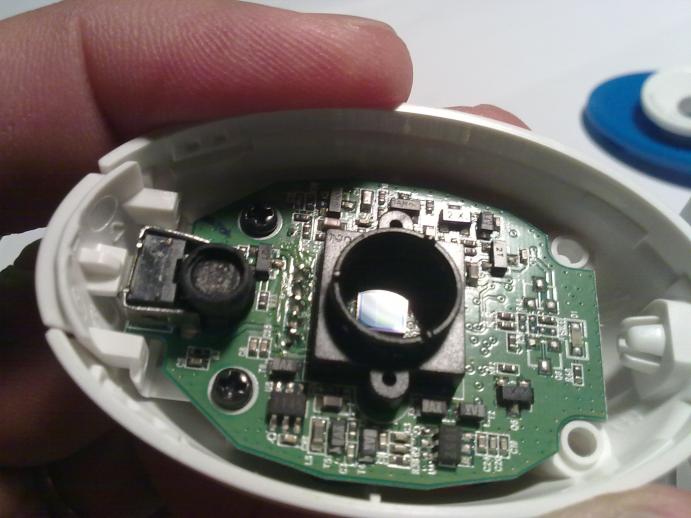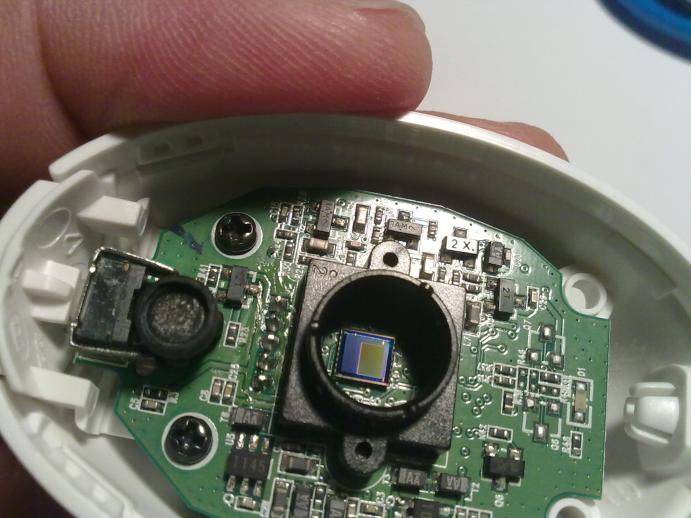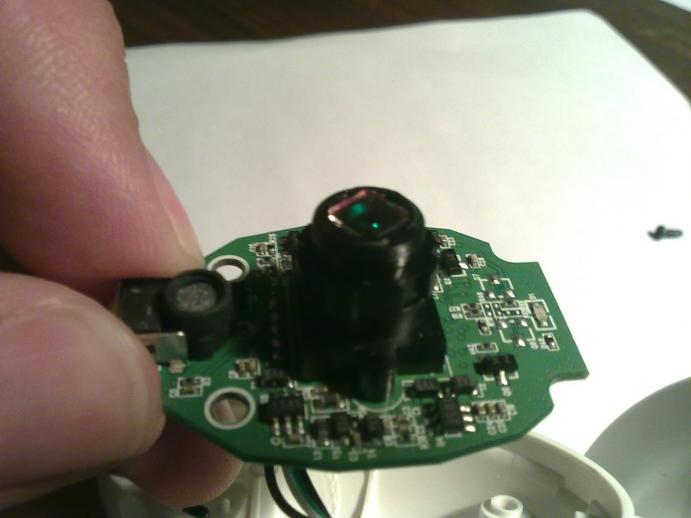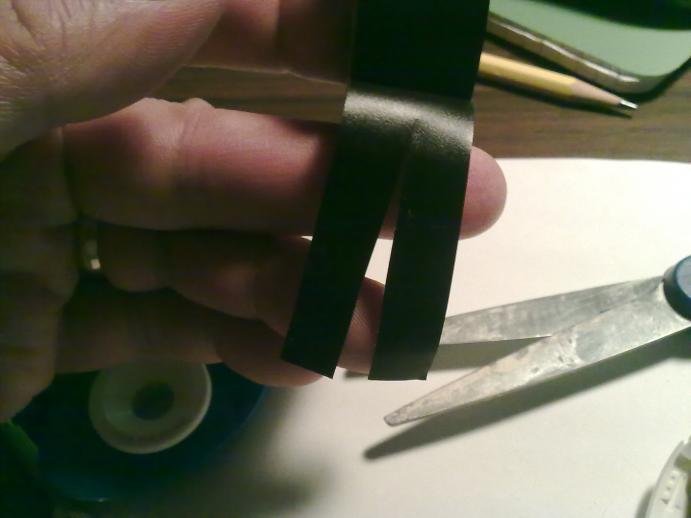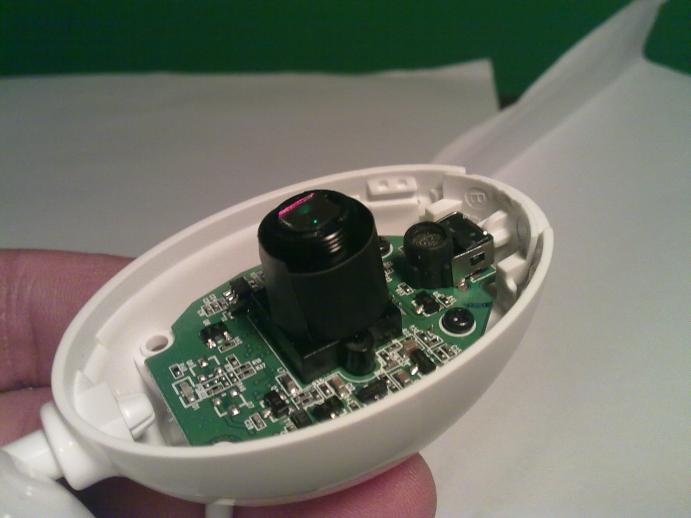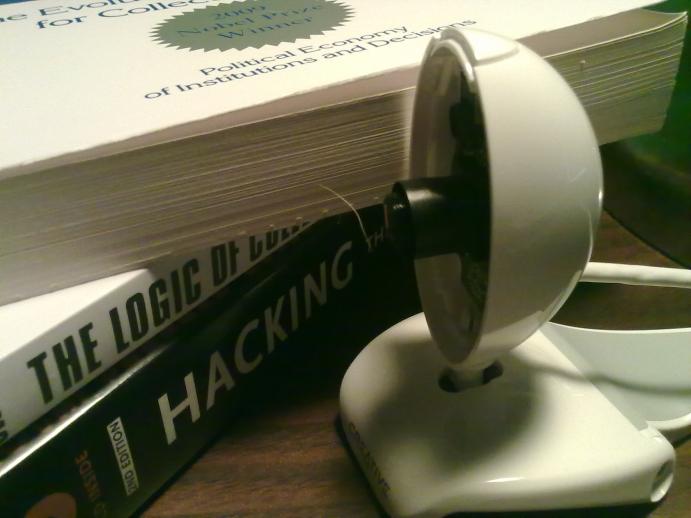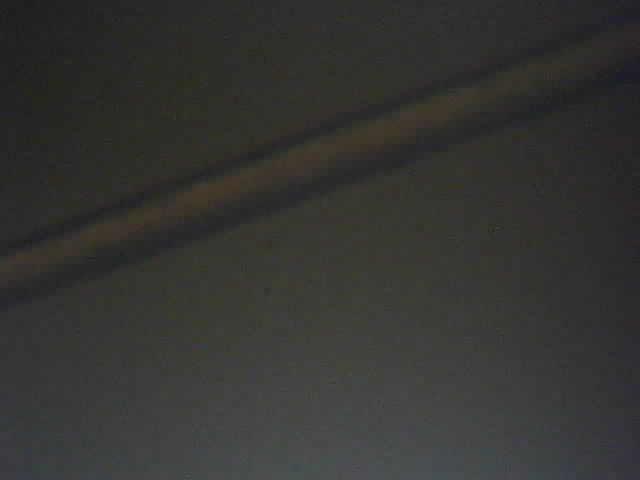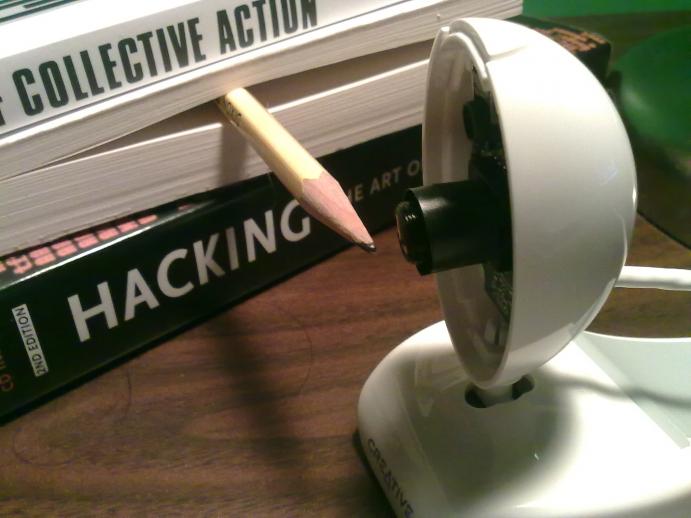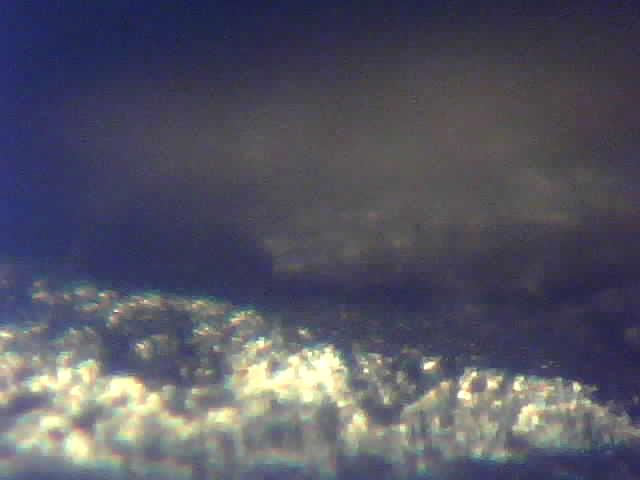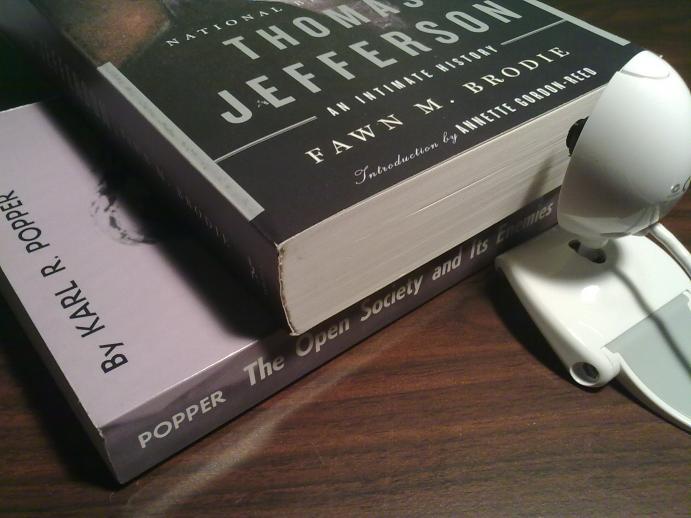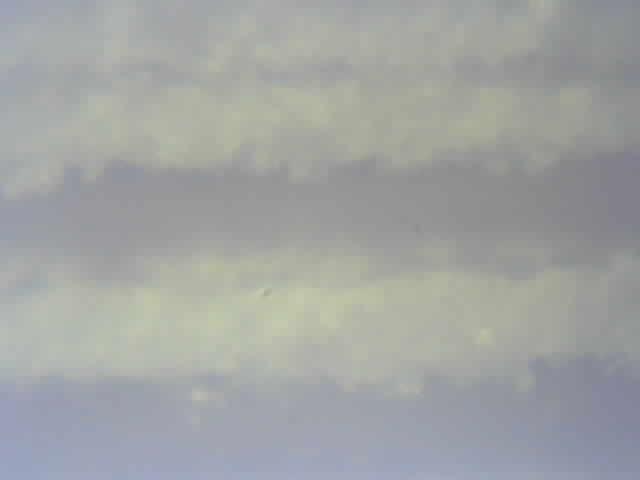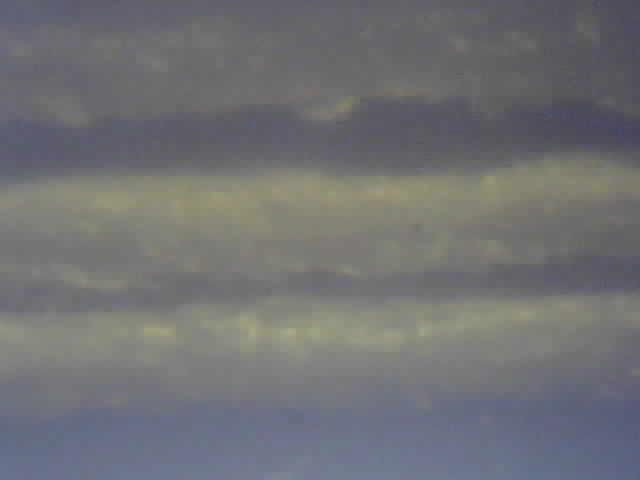DIY Microscopy: Web Cam Surgery

Following on our series on DIY Microscopy: Part I and Part II, let’s now consider a low-cost web camera.
This for example, is the Creative Labs VF0350, which is no longer in the market and
therefore is a good victim for our next homemade digital microscope.
This web camera uses a USB plug to connect to a computer, and will work
seamlessly in Linux, Mac, or Windows systems.
Let’s start by removing the two screws in the back:
Lift the bottom of the cover and slide it out:
This exposes the circuit board, with the camera and its lens at the center,
and a microphone on the left side (the top of the camera):
The lens can be focused by turning it in its supporting socket:
It can actually be fully removed, exposing the sensor underneath:
which is a 640×480 pixels CCD:
To convert this camera into a microscope, we just need to move the lens away from the sensor.
A lens in a web camera will typically be set up to focus on object that is far away, and
therefore the lens ends up being separated from the sensor by about the focal length.
In order to get a microscope, we need to move the lens to be located about 2x the focal
length from the sensor. Here we are taking advantage of the fact that the sensor itself is
already of microscopic scale. A typical web cam will have a sensor with a pixel size between
2-to-5 microns.
When placing a lens at 2X its focal length from an object, we get 1:1 magnification.
http://en.wikipedia.org/wiki/Lens_%28optics%29
Given the small size of the sensor, this leads us to an optical system that captures
objects at a magnification of 5 microns-per-pixel.
Cut half-a-width of electrical tape, long enough to go around the lens socket:
Put the tape around the lens socket and secure the lens in its new position:
Put a sample inside the pages of a book (as a sample holder) very close in front of the lens.
In this case, about 5 mm away from the lens:
A strand of dog hair:
And our typical inspection of household common objects…
A pencil:
and the picture taken with the camera, by using Cheese in an Ubuntu Linux installation:
Then inspecting the pages of a book:
and the corresponding image taken with the web camera:
This book has 600 pages and a thickness of 35mm,
for an estimated page width of 58 microns per page; this
maps to about 15 pixels in the image above,
for an estimate of 3 microns-per-pixel.
Here again, with slightly different illumination:
REFERENCES
- DIY Microscopy at Hackteria.org
- Web Camera microscope : http://hackteria.org/?p=52
- http://hackteria.org/wiki/index.php/DIY_microscopy
- http://blog.makezine.com/2011/06/02/diy-gigapixel-microscopy/
